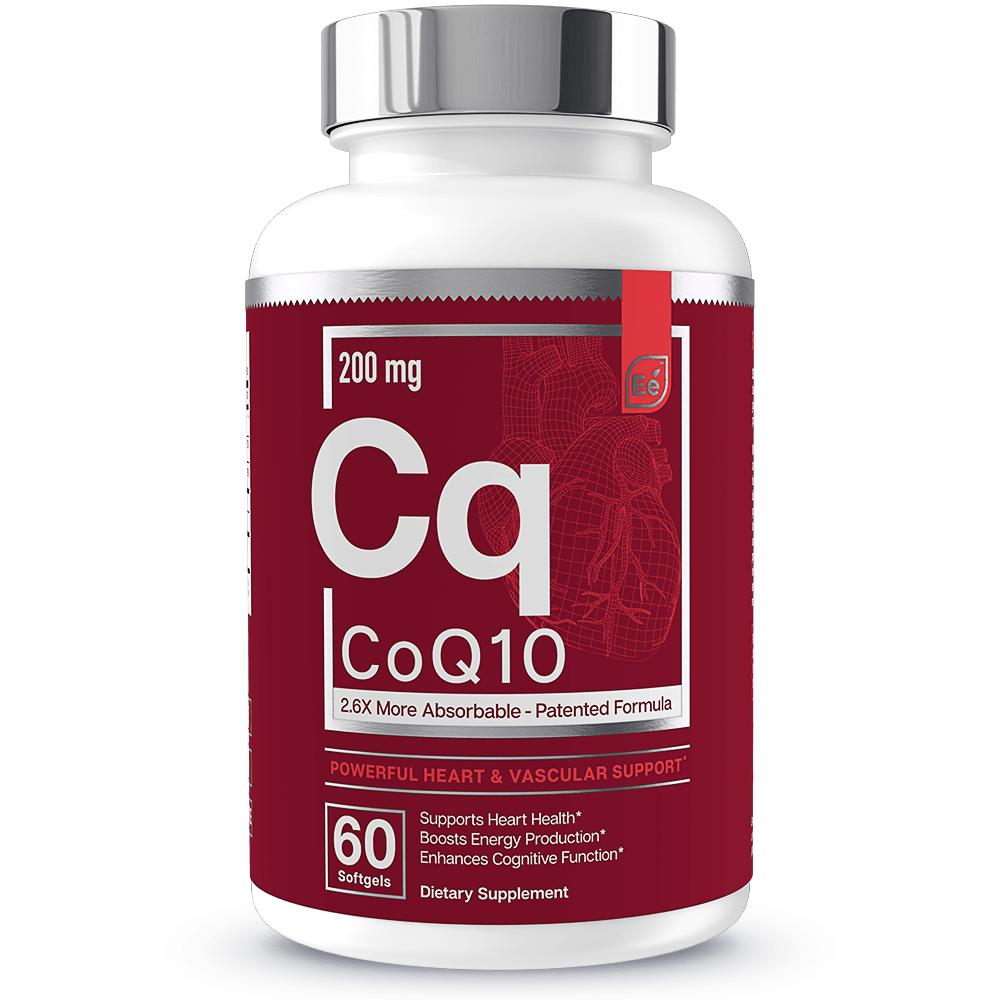Dr. Kahana Reveals The Early Signs Of Gut Disease That Can Save Your Life
How One Simple Solution Can Improve Your Health.
 Take a look at your hand. Seems human, right? Look at it with a microscope, though, and you’ll begin to question things. Right now there are about 3,900 bacteria living on every square inch of your hand.1
Take a look at your hand. Seems human, right? Look at it with a microscope, though, and you’ll begin to question things. Right now there are about 3,900 bacteria living on every square inch of your hand.1
Don’t worry, that bacteria is supposed to be there. You’ve been collecting it since you were born, and you will continue to add to that collection for the rest of your life. In fact, 90% of the cells in your body are bacterial.
That said, you can imagine how much power bacteria have over your body – and your health. They can affect your digestion, skin, immune system, and even your personality. We’ll get to that in a moment.
But first, why are bacteria living inside you? Simply put, they need a safe environment to live in, and your body provides that. In exchange they give you some much-needed benefits. These include helping your body absorb the nutrients it needs to survive from the food you eat, and keeping your immune system in shape.
You know, the stuff that keeps you alive.
The Air You’re Breathing, The Water You’re Drinking, And The Meds You’re Taking Are Killing Your Good Bacteria
There are countless ways our healthy bacteria can die, and most are impossible to avoid. The main culprits include:
The air: Studies show that common airborne toxins can wreak havoc on your good bacteria.
Chlorinated water: Drinking it daily can destroy the good bacteria in your system
Antibiotics: These kill both good and bad bacteria.
Most foods: Antibiotics are commonly found in meats. Sugar also harms your bacteria, as does fast food.
Stress and anxiety: Studies show stress decreases bacterial diversity
Symptoms of dying bacteria usually start innocently enough: a little bloating after a big meal, or some afternoon fatigue. Left untreated, though, these symptoms spiral into life-threatening diseases.
There are dozens of signs that your microbiome is out of balance, but the most common are:
Fatigue
Headaches
Digestive discomfort
Anxiety
Weight gain, or inability to lose weight
These signs are more annoying than worrisome, but if left unchecked, things can get much worse.
-
Conditions that stem from a bacterial imbalance include cancer, diabetes, depression, anxiety, autoimmune disorders (like IBS and arthritis), and even learning disabilities.
In a nutshell, without the right number of good bacteria in your body, you’ll begin to suffer from painful conditions that may eventually kill you.
Warning: Few Probiotic Supplements Work.
As a gastrointestinal doctor with years of experience, I’ve seen my fair share of patients with bacterial imbalances. And one common remedy fixed most of them.
You may already know part of the answer: Probiotics. But that’s not actually the solution.
If you haven’t heard of probiotics, they’re supplements that put good bacteria into your digestive system. Adding a laboratory-grade probiotic has been clinically proven to help solve a number of body-wide health problems, including mood disorders, acne, and autoimmune conditions. I’ve seen countless patients turn their lives around with a simple supplement.
There’s just one problem. 90% of probiotic supplements marketed to the public don’t actually work.
Clinically, we’ve seen that probiotics can radically improve health, but picking up the best-priced supplement from your grocery store or from Amazon isn’t the answer. More than most health supplements, the potency and safety of probiotic brands are varied.
Since the FDA hasn’t regulated their use, that means that brands can put whatever they want into their probiotic. Is that really something you want to be ingesting on a daily basis?
Getting Probiotics From Yogurt Is The Worst Thing You Can Do For Your Health
Many of my patients turn to yogurt. They want to stay all-natural and get their probiotics from real food, but I have some bad news: yogurt can actually be worse for your good bacteria. That’s because most yogurts contain sweeteners, other artificial flavorings, antibiotics, and hormones that can all hurt your good bacteria more than help. And in order to get the minimum effective serving of probiotics, you would need to eat 25 yogurts every day. You can imagine how unhealthy – and expensive – that can get.
Thankfully, there are effective and safe probiotic supplements out there. You just need to be careful and do your research. Most importantly, you need to find a probiotic with clinically proven, laboratory-grade strains.
Forget A Needle In A Haystack. Finding The Right Probiotic Supplement Is Even Harder
Studies on probiotics have helped formulate specific guidelines for which bacterial strains you need, the potency, and the additives that will negate any positive results. Unfortunately, most probiotic supplements don’t meet these strict requirements.
It took me years to find the right probiotic for myself, my family, and my patients. It sounds like I’m exaggerating, but when you understand the factors that go into play when weighing in on the quality of a probiotics supplement, you’ll understand why it was so difficult.
You need:
At least 8 diverse laboratory-grade strains
Minimum 50 billion Colony Forming Units (CFUs) per serving
Clinically studied strains listed on label
Prebiotics
Protection from stomach acid
100% natural ingredients
I scoured my local grocery store, health food stores, and the internet. I tried dozens of supplements that looked promising, but only one actually fit the bill.
It’s called Complete Probiotics Platinum, and it’s formulated by the prestigious health brand 1MD. It contains a carefully selected blend of 11 strains of laboratory-grade bacteria clinically proven to improve gut health, a guaranteed 50 billion live CFUs per serving in an all-natural veggie capsule. 1MD combines these strains with a clinically-proven prebiotic blend called NutraFlora Prebiotic® fiber mix.
My patients have seen the most profound improvement after using Complete Probiotics Platinum. Thousands of people have regained the freedom to do what they want. Their digestive pain is gone. Their fear of embarrassment is gone. They can enjoy life again.
Don’t just take my word for it, though. These women both enjoy the 1MD lifestyle, and they have the results to prove it.
Please make sure your speakers are on
These individuals, and all of my patients, are the reason I believe that Complete Probiotics Platinum by 1MD is one of the safest, most comprehensive, and effective probiotics supplement on the market. Click below to get your 3-month supply today, and start your path to better health and the freedom to enjoy life the way you’ve always wanted.
I'm Ready to Start My Path to Better Health >>
Dr. Kahana Answers Some Frequently Asked Questions About Probiotics:
-
How To Choose The Right Probiotic?
- Choice of Strains
Studies show that an effective probiotic supplement requires multiple diverse bacterial strains with clinically approved substrains. Unfortunately, most supplements on the market contain only one or two strains of bacteria, and few of these actually list their substrains, which is a huge red flag that the product isn’t effective.
- Potency
Multiple studies have shown that probiotic potency has a direct effect on clinical response. That’s why the best probiotic supplements have a high concentration of live bacteria –– usually over 15-20 billion colony forming units per serving. Unfortunately, very few probiotics have more than 10 CFUs.
- Protection From Stomach Acid
All of that bacteria needs to survive the harsh, acidic conditions in your stomach. That said, you’ll want to find a capsule with delayed release technology, plus acid and bile resistance to help shield the probiotics.
- Prebiotics
These feed your probiotics and help keep them alive. That said, while they’re an absolutely necessary component of a probiotic supplement, most brands don’t include them.
- Quality Is Key
When comparing different probiotic brands, most of us are usually swayed by price. However, when you're purchasing a supplement, it's important to remember that your health takes priority over your wallet . Try to find products with the highest-quality, natural ingredients that are third-party lab-tested to give you real results. They may cost more, but they're far safer and more effective. In the long run, you'll save money by preserving your health now with the right probiotic.
-
Are Probiotics Safe? Can You Take Them With Other Meds?
- Some probiotic supplements are safe. As I mentioned earlier, the FDA hasn’t regulated probiotics. This leaves the door open for brands to add whatever they want to their formulas and keep their manufacturing costs down. Unfortunately, most probiotics available on the market today include additives and fillers that can cause some harmful side effects.
These include: Magnesium stearate, Chromium, Gelatin capsules, Silicon dioxide, Artificial colors and flavors, and hydrogenated and partially hydrogenated oils.
Other than that, though, probiotics are safe to use. They don’t interact with other medications, supplements or vitamins. In fact, you can take a high-potency probiotic supplement along with other probiotic-rich foods every day and be totally fine.
You just have to make sure you’re taking something safe and effective.
-
What if Complete Probiotics Platinum Doesn’t Work For Me?
- Probiotic supplements usually take time to show real results –– usually between two to three months. With that in mind, 1MD decided to offer a 90-day, 100% money-back guarantee. You’ll be able to try the product for three full months, and if you don’t see results, you can simply send it back.
Citations
- Anaerobe. 2012 Aug;18(4):405-13.
- Harvard Medical School. Health benefits of taking probiotics. Harvard Health Publications.
- University of Michigan. Probiotics. University of Michigan Health System.
- Zohreh Mazloom, PhD, Abbas Yousefinejad, PhD student, and Mohammad Hossein Dabbaghmanesh, MD. A Clinical Trial. Iran J Med Sci. 2010 Mar; 36(1): 38-43.
- Mohammadi AA, Jazayeri S, Khosravi-Darani K, et al. Nutr Neurosci. 2015 Apr 16.
- Purchiaroni F, Tortora A, Gabrielli M, et al. The role of intestinal microbiota and the immune system. Eur Rev Med Pharmacol Sci. 2013 Feb;17(3):323-33.
- Miguel Bixquert. Indian J Med Res. 2013 Aug; 138(2): 175-177.
- Kadooka Y, Sato M, Ogawa A, et al. Br J Nutr. 2013 Nov 14;110(9):1696-703. doi: 10.1017/S0007114513001037.
- Kadooka Y, Sato M, Imaizumi K, et al. Eru J Clin Nutr. 2010 Jun;64(6):636-43. doi: 10.1038/ejcn.2010.19.
- Ooi LG, Ahmad R, Yuen KH, Liong MT. J Dairy Sci. 2010 Nov;93(11):5048-58. doi: 10.3168.jds.2010-3311.
- Chen YS, Jan RL, Lin YL, Chen HH, Wang JY. Pediatr Pulmonol. 2010 Nov;45(11):1111-20. doi: 10.1002/ppul.21296.
- Itoh H, Uchida M, Sashihara T. Cytotechnology. 2011 Mar;63(2):153-61. doi: 10.1007/s10616-010-9326-5.
- Ryuzo Deguchi, Hidemasa Nakaminami, Emiko Rimbara, et al. 2012 May; 27(5): 888-892. doi: 10.1111/j.1440-1746.2011.06985.x.
- Altern Med Rev. 2008 Dec;13(4):307-14.
- JOP. 2005 May 10;6(3):206-15.
- Postgrad Med. 2009 Mar;121(2):114-8.
- Methods Find Exp Clin Pharmacol 2010, 32 (2); 129-132
- Methods Find Exp Clin Pharmacol. 2009 Dec;31(10):655-9.
- J Clin Gastroenterol. 2008 Jul;42 Suppl 2:S58-63. Review.
- Postgrad Med. 2009 Mar;121(2):119-24.
- Beneficial Microbes, 2010; 1(1): 31-36
- Am J Health Syst Pharm. 2010 Mar 15;67(6):449-58.
- Paper: Making Sense of Digestive Enzymes: ProThera, Inc.;2008.
- Int J Pancreatol. 1998 Aug;24(1):19-22.3.
- Available at: http://www.us.elsevierhealth.com/media/us/samplechapters/9781437709599/Sample-Chapter-04.pdf. Accessed December 5, 2012.
- J Int Soc Sports Nutr. 2008 Jul 24;5:10.
- Proc Nutr Soc. 1971 Dec;30(3):248-54.
- Rev Med Suisse. 2009 Mar 25;5(196):662-4,66.
- Gut Microbes. 2010 May-Jun; 1(3): 148-163.
- Am J Physiol Gastrointest Liver Physiol. 2012 Nov 8.
- Int J Food Microbiol. 2012 Jan 16;152(3):189-205.
- Immunobiology. 1992 Feb;184(2-3):157-79.
- Curr Opin Biotechnol. 2012 Apr;23(2):192-201.
- Lait 73 (1993) 249-256
- PLoS One. 2011;6(8):e23652.
- J Investig Allergol Clin Immunol. 2006;16(2):86-93.
- Gut. 1996 Mar;38(3):306-9.
- Am J Clin Nutr. 2007 May;85(5):1286-92.
- Pharmacotherapy. 2007 Jun;27(6):910-20.
- Gastroenterology. 1997 May;112(5):1624-34.
- J Clin Gastroenterol. 1999 Jan;28(1):3-10
- Curr Treat Options Gastroenterol. 2003 Oct;6(5):369-374.
- Biochemistry (Mosc.). 2000 Jul;65(7):817-23.
- J Gastroenterol Hepatol. 2006 Nov;21(11):1669-74.
- Life Sci. 2006 Nov 10;79(24):2245-50.
- J Radiat Res (Tokyo). 2008 Jul;49(4):341-7.
- Can J Gastroenterol. 2002 Nov;16(11):785-9.
- Aliment Pharmacol Ther. 2001;15:715-725
- Helicobacter. 2002 Dec;7(6):384-9.
- Biochem Biophys Res Commun. 2006 Jul 7;345(3):1215-23.
- Steroids.1994 Feb;59(2):136-41.
- World J Gastroenterol. 2005 Dec 21;11(47):7499-507.
- J Antimicrob Chemother. 2004 Jul;54(1):243-6.
- Indian Journal of Clinical Biochemistry. 2002;17 (2):44-51. FTP
- Indian J Exp Biol. 2003;41:875-879.
- Eur J Pharmacol. 2001 Dec 21;433(2-3):225-30.
- Hum Exp Toxicol. 2006 Oct;25(10):581-91.
- Int Immunopharmacol. 2006 Oct;6(10):1543-9.
- Curr Pharm Biotechnol. 2009 Sep;10(6):641-9.
- Hindustan Antibiot Bull. 2005-2006;47-48:13-9.
- J Gastroenterol. 2004 Sep;39(9):831-7.
- Mol Nutr Food Res. 2007 Jun;51(6):675-83.
- Am J Physiol Gastrointest Liver Physiol. 2008 Aug;295(2):G211-8.
- Nippon Rinsho. 2007 May;65(5):813-21.
- J Gastrointest Surg. 2008 Aug;12(8):1331-40.
- Curr Opin Gastroenterol. 2007 Jul;23(4):428-33.
- Am J Gastroenterol. 2001 Jul;96(7):2013-8.
- Am J Med. 2001 Jul;111(1):33-7.
- Wilkins J. Jr. Method for treating gastrointestinal disorder. U.S. Patent (642045). 2002.
- MedSciRes 1996;24:309-310
- Willette RC, Barrow L, Doster R, Wilkins J, Wilkins JS, Heggers JP. Proprietary study. WRC Laboratories, Inc. Galveston, Tx.
- J Altern Complement Med. 2004 Aug;10(4):667-9.
- J Agric Food Chem. 2004 Jun 30;52(13):4090-6.
- Aliment Pharmacol Ther. 2003 Dec;18(11-12):1099-105.
- Phytomedicine. 2002 Dec;9(8):694-9. -artichoke
- Med Sci Monit. 2001 May;7 (Suppl 1):316-20.
- Cochrane Database Syst Rev. 2002;(3):CD003335.
- J Agric Food Chem. 2002 Jun 5;50(12):3458-64.
- Phytother Res. 2001 Feb;15(1):58-61.
- Arzneimittelforschung. 2000 Mar;50(3):260-5.
- Phytother Res. 2002 Jun;16(4):368-72.
- Phytother Res. 2002 Nov;16(7):677-9.
- J Ethnopharmacol. 2004 Dec;95(2-3):169-72.
- Lancet. 2003 Jun 7;361(9373):1935-8.
- Curr Treat Options Gastroenterol. 2001 Aug;4(4):333-337.
- Altern Med Rev. 2002 Oct;7(5):410-7.
- Gastrointest Endosc. 2001 Feb;53(2):172-7.
- J Pediatr. 2001 Jan;138(1):125-8.
- J Gastroenterol. 1997 Dec;32(6):765-8.
- Microbios. 2001;106 Suppl 1:31-9.
- Pediatr Int. 2004 Oct;46(5):509-15.
- Appl Environ Microbiol. 2004 Oct;70(10):6113-22.
- FEMS Microbiol Rev. 2004 Oct;28(4):405-40.
- Best Pract Res Clin Gastroenterol. 2004 Apr;18(2):287-98.
- Acta Biomed. 2006 Aug;77(2):85-9.
- Diabetologia. 1980 Sep;19(3):198-204.
- Magy Seb. 2001 Dec;54(6):347-50.
- J Clin Gastroenterol. 2001 Apr;32(4):319-23.
- Eur J Gastroenterol Hepatol. 1996 Jul;8(7):699-703.
- Aliment Pharmacol Ther. 2000 Dec;14(12):1671-7.
- Arzneimittelforschung. 1999 Nov;49(11):925-32.
- Dig Liver Dis. 2007 Jun;39(6):530-6.
- J Gastroenterol. 2007 Jul;42(7):539-42.
- Z. Gastroenterol. 1992 Dec;30(12):885-6.
- Gastroenterology. 1991 Jul;101(1):55-65.
- Gastrointest Endosc. 2003 Apr;57(4):475-82.
- Aliment Pharmacol Ther. 2003 Feb;17(3):445-51.
- Phytother Res. 2000 Feb;14(1):20-3.
- Phytother Res. 2003 Feb;17(2):135-40.
 Take a look at your hand. Seems human, right? Look at it with a microscope, though, and you’ll begin to question things. Right now there are about 3,900 bacteria living on every square inch of your hand.1
Take a look at your hand. Seems human, right? Look at it with a microscope, though, and you’ll begin to question things. Right now there are about 3,900 bacteria living on every square inch of your hand.1

















